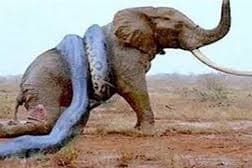PANAJI: Goa's plateaus, many of them now occupied by sprawling industrial hubs of economic activity, harbour micro habitats with unique floral and faunal biodiversity. Some like
Socorro, still pristine, but in imminent danger, are waiting to be explored for their biota.
A group of birders and enthusiasts foraying often onto the vast Socorro plateau have been amazed to find 200 species of resident and migrant birds, pond turtles, a few species of frogs and insects and many flowering plants. A couple of carnivorous plants, Utricularia graminifolia and Indica drosera, which are part of the flower plant biodiversity in the famous Kaas plateau near Satara, Maharashtra, were also seen growing here during monsoon.
"In the dry season, the plateau seems dry, rocky and desolate in patches in comparison to the surrounding lush green forest. But the red dust comes to life after monsoon. Streams appear in rocky beds and the ground is covered in a thick mat of vegetation," says a local resident, Rushil Fernandes.
Fernandes is one among the group members, who took photographs and compiled details of more than a dozen plant species.
'Disturbance of top soil causes ecosystem damage'
"The high density of species in a small area of just over 100sqm was interesting," he said, adding that it is the confluence of climate, geography and nutrient-poor top soil that makes this lateritic plateau home to a number of species with extremely limited distribution.
Socorro's lateritic plateau, which is one of the last few green corridors for wildlife in
Bardez, is hemmed in by the villages of Salvador do Mundo, Pomburpa, Ecoxim, Olaulim, Ucassaim, Bastora and Socorro. The Serula village comunidade also owns large tracts of land on this plateau.
"These are rocky outcrops and any plants that survive in a different set of environmental conditions with little or less topsoil are mostly herbaceous in these very unique micro habitats," says professor of botany,
Goa University, M K Janarthanam said.
These carnivorous plants, which trap insects and other food or some other species, may not be found commonly in Goa, but they are fairly widespread from
Africa to Australia, as they adapt to different conditions. In Goa, they can be found near Dudhsagar, at high altitude, sources said.
Another area in Goa that has similarity to high altitudinal climatic conditions of Kaas is the remote Surla village in the Sahyadri range near Goa's north-eastern border. "Impatiens minor (seen growing in Socorro) is also found there," he said.
Far away from Surla and Socorro, on Kevnem's lateritic plateau in the village of Rivona, botanists of Goa University had documented a unique sparkly white flower with brownish-black seeds, almost a decade ago. They had named it Dipcadi goaense after the state. The new species is endemic, because it cannot be found anywhere in the world, except the type locality in the Sahyadri foothills.
Some development activity to lay a road in Kevnem raised fears of a threat to Goa's unique flower. In Socorro, as much as any other plateau, including the Bambolim plateau housing the university campus, the danger of urbanization is also looming threateningly close. The campus has several species of carnivorous plants, grasses, legumes, pipeworts, sedges and other aquatic plants.
Human intervention and resultant disturbance of the top soil irreversibly damages the ecosystem.
"Socorro plateau has good avian biodiversity and other flora and fauna and it needs to be preserved. The spot can be promoted for birders, as it can be a green lung also for the highly urbanised surroundings," environmental activist Caroline Colaco.
 Disturbance of top soil causes ecosystem damage
Disturbance of top soil causes ecosystem damage Disturbance of top soil causes ecosystem damage
Disturbance of top soil causes ecosystem damage




